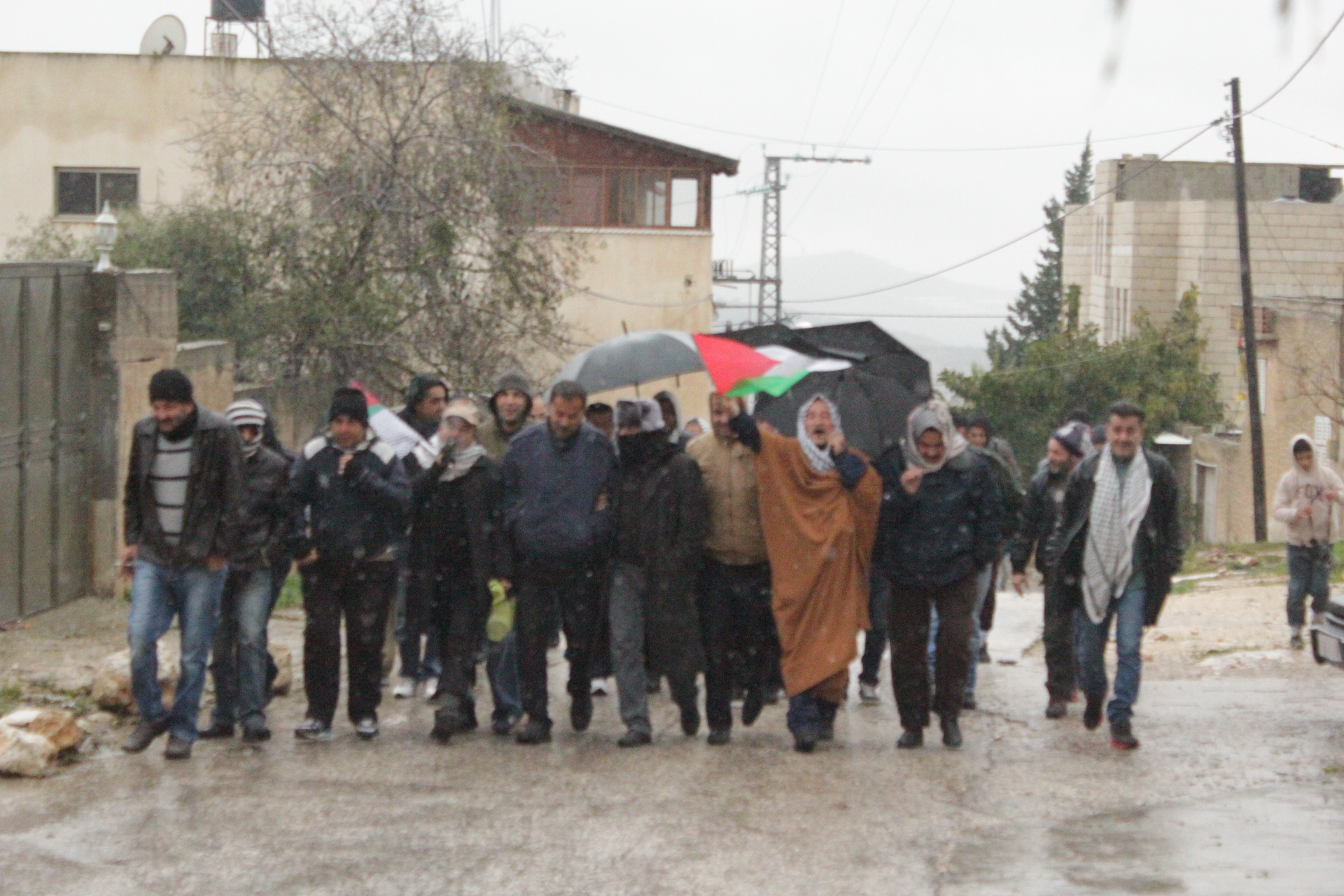Tag: Tear Gas
-
Live ammunition used at Nabi Saleh demonstration
16th January 2015 | International Solidarity Movement, Ramallah team | Nabi Saleh, Occupied Palestine For five years now, residents of Nabi Saleh have been denied access to their spring. A source of irrigation for their crops, as well as a place for recreation: al-Qaws spring was the heart of this farming community. The illegal settlement of…
-
VIDEO: Snow and rain does not stop Kufr Qaddum protest
9th January 2015 | International Solidarity Movement, Nablus team | Kufr Qaddum, Occupied Palestine Dozens of demonstrators braved the rain today to protest the continued closure of the Kufr Qaddum’s main road to Nablus. A peaceful march began at noon after prayers ended. Villagers, alongside Israeli and international activists, walked up Kafr Qaddam’s main street as…
-
VIDEO: “They look like they’re in a war zone, but what they’re aiming at is five-year-olds”
31st December | International Solidarity Movement, Khalil team | Hebron, Occupied Palestine By 10:30 am on Tuesday morning of December 30, Palestinian children attending school near Qeitun checkpoint in al-Khalil (Hebron) had endured over forty tear gas canisters, multiple rounds of rubber coated steel bullets and stun grenades, and the arrest of a twelve-year-old boy. Israeli forces fired down the road…



